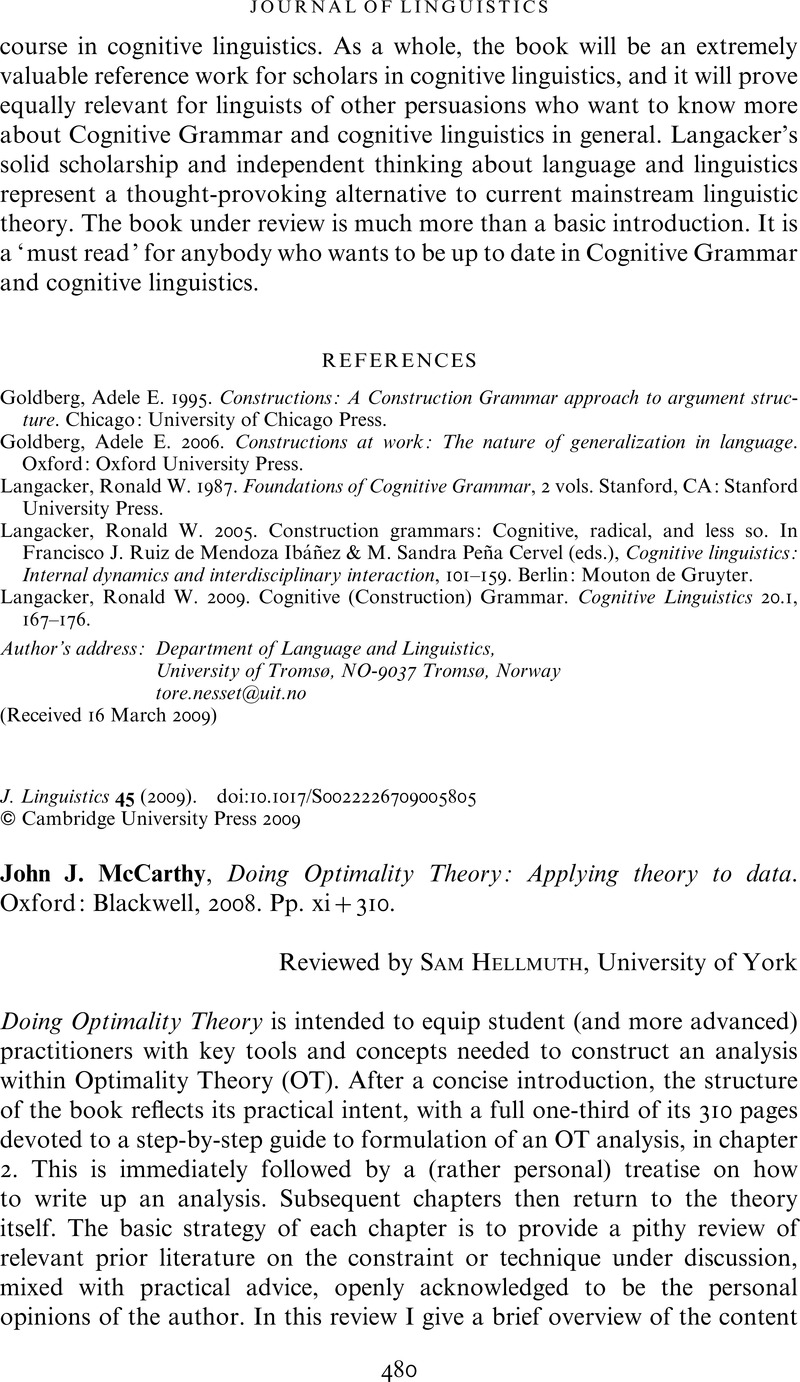No CrossRef data available.
Article contents
John J. McCarthy, Doing Optimality Theory: Applying theory to data. Oxford: Blackwell, 2008. Pp. xi+310.
Published online by Cambridge University Press: 04 June 2009
Abstract
An abstract is not available for this content so a preview has been provided. Please use the Get access link above for information on how to access this content.

- Type
- Reviews
- Information
- Copyright
- Copyright © Cambridge University Press 2009
References
REFERENCES
Hayes, Bruce, Tesar, Bruce & Zuraw, Kie. 2003. OTSoft 2.3, software package. http://www.linguistics.ucla.edu/people/hayes/otsoft (22 March 2009).Google Scholar
McMahon, April. 2000. Change, chance, and optimality. Oxford: Oxford University Press.CrossRefGoogle Scholar
Prince, Alan S. 2002a. Arguing optimality. University of Massachusetts Occasional Papers in Linguistics 26, 269–304.Google Scholar
Prince, Alan S. 2002b. Entailed ranking arguments. Ms., Rutgers University. [ROA 500.]Google Scholar
Prince, Alan S. & Smolensky, Paul. 1993. Optimality Theory: Constraint interaction in generative grammar (Rutgers Center for Cognitive Science Technical Report 2). Piscataway, NJ: Center for Cognitive Science, Rutgers University. [Report is available at http://roa.rutgers.edu/view.php3?roa=537. Revised version published by Blackwell, Oxford, 2004].Google Scholar




